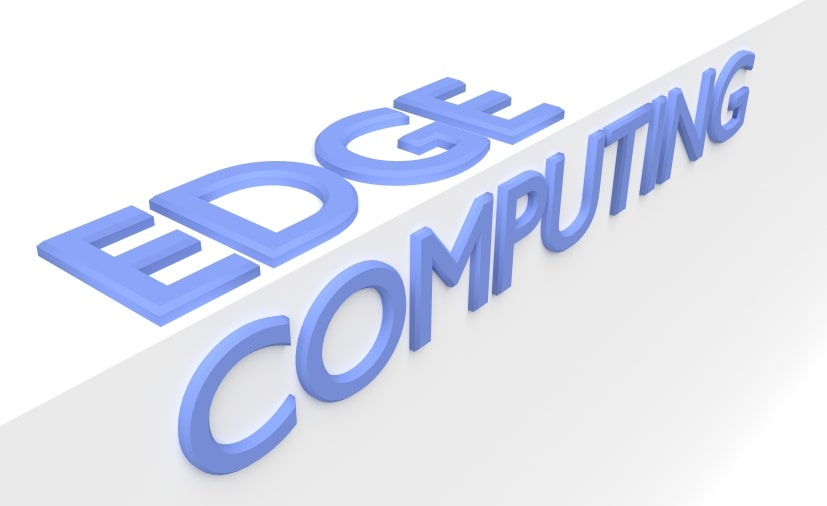Edge computing dominated every list covering recent technological trends in 2018, and it will continue to do so in 2019. Edge computing no longer belongs in the future but has already arrived. We are living in the era of edge.
Globally Edge Computing market size is expected to grow from USD 1.17 billion in 2016 to USD 6.73 billion by 2022 with an exceptional CAGR of 35.4% from 2017 to 2022. The Edge computing industry is bifurcated into regional market segments – North America, Latin America, Europe, Africa, and Asia-Pacific. North America is showing substantial growth due to the high adaptation of intelligent devices and the implementation of new technologies which demand a distributive approach in the existing technology infrastructure.
India, China, and Singapore are leading the market in the Asia-Pacific region, with multiple government initiatives encouraging digitalization, increasing investment in the edge and data center market.
Data, more data, and some more data
Our world now is home to more connected devices than ever before, and it is only increasing. Every new technology creates more and more data that needs to be processed and stored. Data centers need to evolve with infrastructure and technology to handle this unprecedented data volume.
The tremendous growth in edge computing is not exclusive, but a result of the demands by various digital transformations, which need higher speeds and more security at much less cost. Edge data centers are fueling the demand for data consumption and helping the newer technologies realize their full potential. The recent technological developments are seen to either depend on edge for their functioning or are facilitated by edge computing.
Edge computing involves processing the data at the edge, near the user. It reduces the transit of data to the centralized data center- alleviating latency, bringing down the cost of data consumption, and making data cheaper.
The technological upheaval has created a myriad of scenarios where speed and fast data is key, from asset management, critical power issues, process optimization, predictive analytics to the real-time needs of supply chain management in a hyper-connected world, the list is endless.
Let us see in detail how the new buzzwords in technology respond to edge computing.
IoT
The biggest demand for Edge computing comes from the Internet of Things (IoT). The connected device ecosystem is not just an integral part of our day to day lives but affects all industry verticals like healthcare, manufacturing, banking, education, etc.
IoT devices interact with each other and the user creating a data-intensive environment, and sending all this data to a centralized data center for processing will increase latency and cost. Consider a smart city or critical power building like an airport, they have thousands of sensors and IoT devices functioning continuously. It needs quick processing and access to data to deliver good results and ensure smooth working of all the systems. In IoT applications with mission-critical components, edge computing becomes even more important.
To realize their full potential IoT devices require the data to be processed, near the data generation points at the edge. Edge computing has been the bolster for IoT industry and thus a lot of investment for IoT will be dedicated to edge.
5G
5G holds a tremendous promise of advances in data transferring speeds, capacity, connectivity, and reliability. 5G will steer the generation of data higher and will strive for near-zero latency.
Processing the huge amount of data at faster speed requires new devices, new antennas, and new applications. The influx of new data, which needs to be processed in real-time will drive the demand for edge computing, which will mean a growth in the number of data centers. The conventional data centers will also diversify by deploying many micro-data centers around the world.
Artificial Intelligence (AI)
AI and Edge computing are the two most popular technologies that are currently prevalent. AI has made its place into our lives with developments like image, facial and speech recognition, and active web search. AI applications are required to make the real-time decision and need negligible latency. They produce big volumes of data which is not feasible to transit to a cloud or central data center. Hence, AI becomes dependent on the edge to deliver expected results.
With the progress in 5G and Edge computing AI will bring to life many more breakthroughs like self-driving cars.
Virtual Reality (VR)/Augmented Reality (AR)
Augmented Reality (AR) transposes graphics on top of physical reality, for example, Pokemon Go app- It places computer generated game characters on top of the player’s physical reality. Virtual Reality (VR) on the other hand creates an immersive world using computer generated graphics, accessed using an audiovisual device.
AR often downloads the data to the handheld device and might still function with the regular network, but VR requires real-time video processing. The user experience is compromised if the bandwidth is low or latency is high. Hence, the affinity for the edge.
Content Delivery Network (CDN)
CDN does not actually need edge per se, but it essentially is edge computing server placed strategically around the globe, to deliver digital content to users as fast as possible. CDN aims at enhancing the user experience irrespective of the geographical location by reducing latency. Every user request is routed to the nearest CDN edge server bringing down the distance and time of transit for the data. Some examples for CDN would be Netflix, Amazon Prime, etc.
All about the infrastructure
The various technologies discussed above have been present for some time now, but the escalated benefit and enhanced user experience with the process of growth that is witnessed with the adoption of edge computing have simultaneously increased the demand for these technologies and edge infrastructure. With transformation and flexibility as the key themes, data centers are continuously preparing for a distributive approach by implementing an advanced network infrastructure that makes their network faster, more reliable, more ubiquitous and more secure.
References
https://www.marketsandmarkets.com/Market-Reports/edge-computing-market-133384090.html
https://www.sdxcentral.com/edge/definitions/mec-ar-vr/
https://www.commscope.com/Blog/2019-The-Year-of-Data-Centers-Digital-Transformation/

